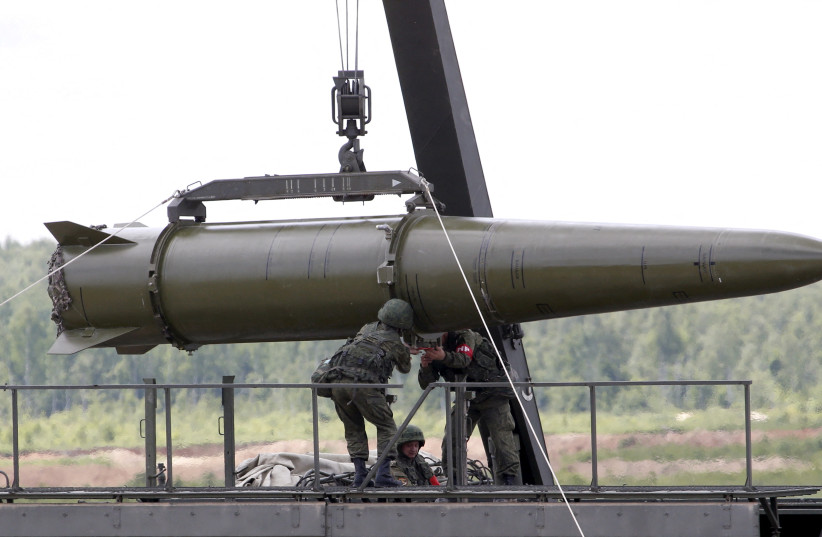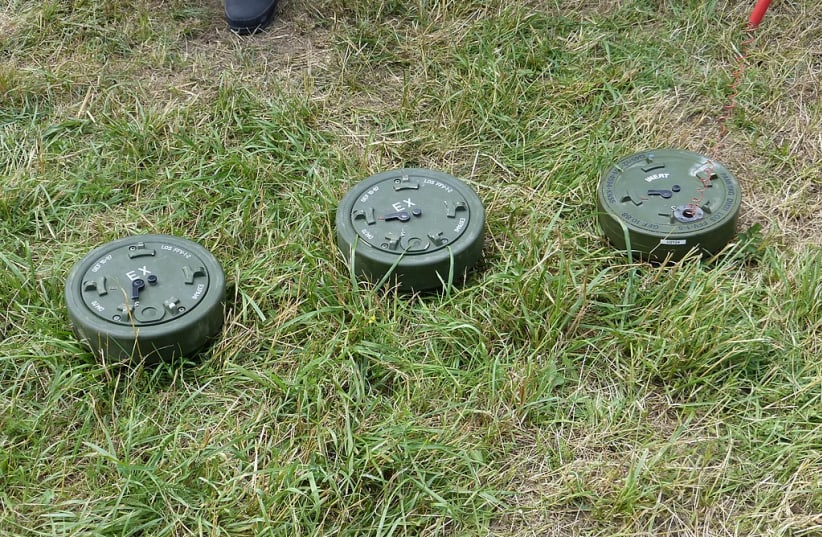Attempting to stop Ukrainian soldiers from advancing, Russia has planted landmines in the Kherson region near the Black Sea, the Ukrainian Intelligence Directorate (GUR) claimed last Thursday. These are not contemporary mines, though; GUR has stated that Russia is making use of Soviet mines constructed in the 1950s.
Although these mines were being stored near Rostov and were to be destroyed, the Russians are using funds intended for their destruction to give “dangerous cargo to the advanced units of the invaders for mining defensive positions,” according to GUR.
The statement added that Russia is acting in response to a successful Ukrainian counterattack in the direction of Kherson that caused Russia to lose ground, soldiers and equipment. “The russian [sic] invaders are urgently constructing additional lines of defense, mining the territory and created engineering barriers.”
Mines in the Russia-Ukraine War
This is likely not the first time that Russia has used landmines in its war against Ukraine. GUR has previously claimed that Russia planted mines throughout eastern Ukraine on roads and in forests in addition to other spaces including the inside of a hospital. Even before the war began, Russia reportedly planted mines in social infrastructure facilities within separatist-controlled Donetsk. Ukraine has also accused Russia of planting naval mines in the Black Sea.
Old Soviet weaponry
Nor is this the first time that Russia has been forced to use Soviet equipment. In order to make up for their losses, the Russians have become increasingly reliant on outdated equipment from the Soviet era that was previously in storage, according to Ukraine’s Intelligence Directorate. Aside from landmines, Russia has also taken out weapons such as anti-aircraft guns and Hurricane Multiple Launch Rocket Systems out of storage.


What do the conventions regarding mines say?
While it is unclear whether the Soviet mines being planted are antipersonnel or antivehicle, Human Rights Watch has previously accused Russia of using antipersonnel mines that are capable of killing people within a 16-meter radius. These mines were banned in 1997 at the Convention on the Prohibition of the Use, Stockpiling, Production and Transfer of Anti-Personnel Mines and on Their Destruction. Russia notably did not sign on to the Ottowa Treaty, which solidified this international agreement.
The UN Secretary-General “calls on all countries to also regulate the use of anti-vehicle landmines,” according to the UN Office for Disarmament Affairs. “Such weapons continue to cause many casualties, often civilian. They restrict the movement of people and humanitarian aid, make land unsuitable for cultivation, and deny citizens access to water, food, care and trade.”
Russian mines backfire
Russia has experienced the risks of planting landmines firsthand, GUR stated. “When trying to set up mine barriers, several sappers-occupants from the battalion-tactical group (BTG) of the 7th military base of the 49th combined arms army of the southern military district (military unit no. 09332) of the russian [sic] occupying forces have already been exploded on old ammunitions.”
Because the incident was classified as an accident, the Ukrainian Intelligence Directorate claims that the families of those killed by the mines will not be compensated.
